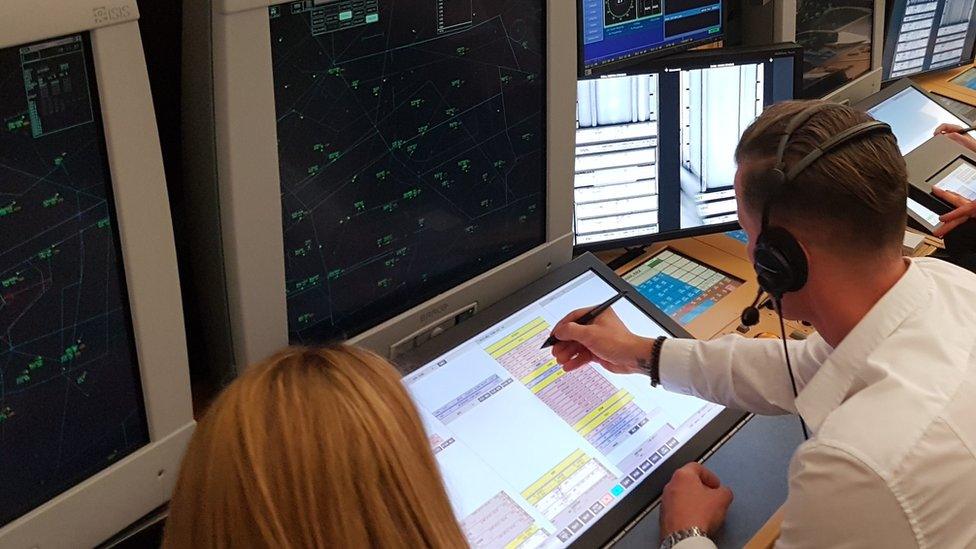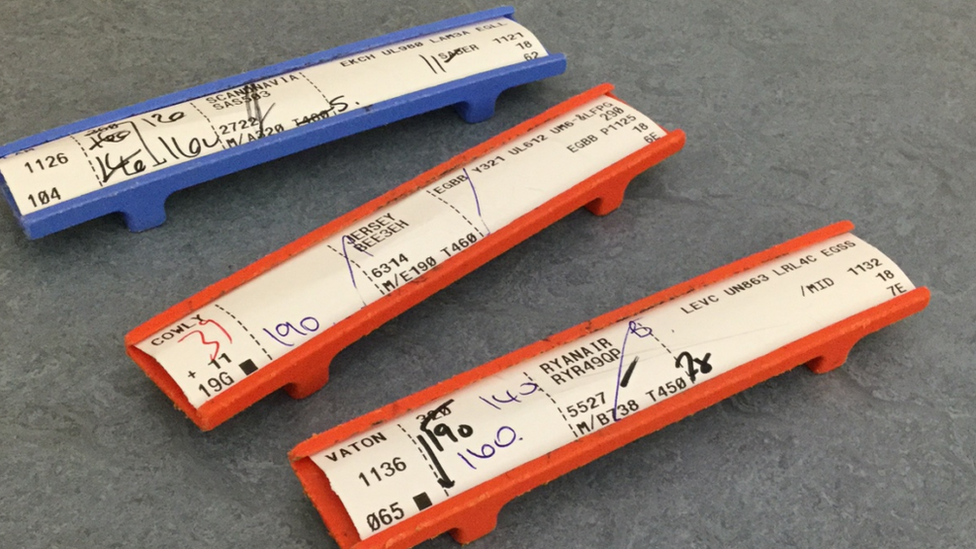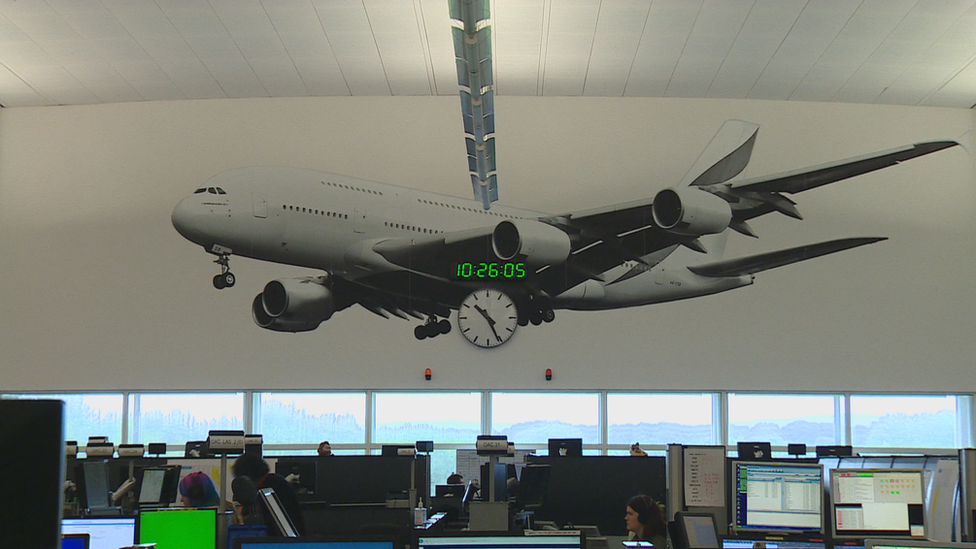Delays warning as air traffic control moves to digital system
- Published

There are up to 300 controllers in one operation who will be changing from a paper to a digital system
Passengers are being warned that the introduction of a new digital air traffic information system could lead to delays at airports from Wednesday.
After 40 years of using paper strips to record instructions passed to pilots, National Air Traffic Services says it can "no longer deal with the demand".
It says it needs to reduce the amount of air traffic in south-east England as controllers get used to the new system.
Nats' Pete Dawson said delays at Heathrow would be around 20 minutes.
The UK's air traffic provider says the electronic tool - called EXCDS - is part of a plan to "meet forecast growth" and "improve efficiency".
The London Air Traffic Control Centre, based in Swanwick, Hampshire, will need to manage the controllers' workload while EXCDS is being introduced, so they can build confidence in the new system.
To ensure that this can be done safely, the centre will be limiting the number of aircraft that fly into Heathrow and Gatwick for three weeks, resulting in some delays.

Air traffic controllers previously used these paper flight strips
Mr Dawson says: "It's very difficult to predict exactly what that delay will be - there are many other factors like the weather and industrial action in France.
"Broadly speaking, as a rough rule of thumb, we anticipate that where aircraft are delayed - going into Heathrow, for example - the average delay per aircraft will be about 20 minutes.
"It'll be about half of that at Gatwick - about 10 minutes."
People living under flight paths will also be affected, as overnight curfews for landing and departing aircraft will be relaxed.
Nats has asked for permission to land some planes "slightly earlier and slightly later than usual".
Why has it taken so long to go digital?
The paper strips system is very well-established, and according to Mr Dawson, integrating a new electronic system is more complex than it seems.
He says the digital system has "completely changed the way air traffic controllers in London do their job - it's a very new way of working".
"We are not the only air traffic control organisation that uses paper strips. They do function, and have done very successfully for many years, and will continue to do so in many other places across the world," said Mr Dawson.
"We have a timeline of technology change. This is where this particular current transition fits into that timeline, so now is a good time to do it."
- Published30 June 2017

- Published19 May 2017

- Published31 October 2016
